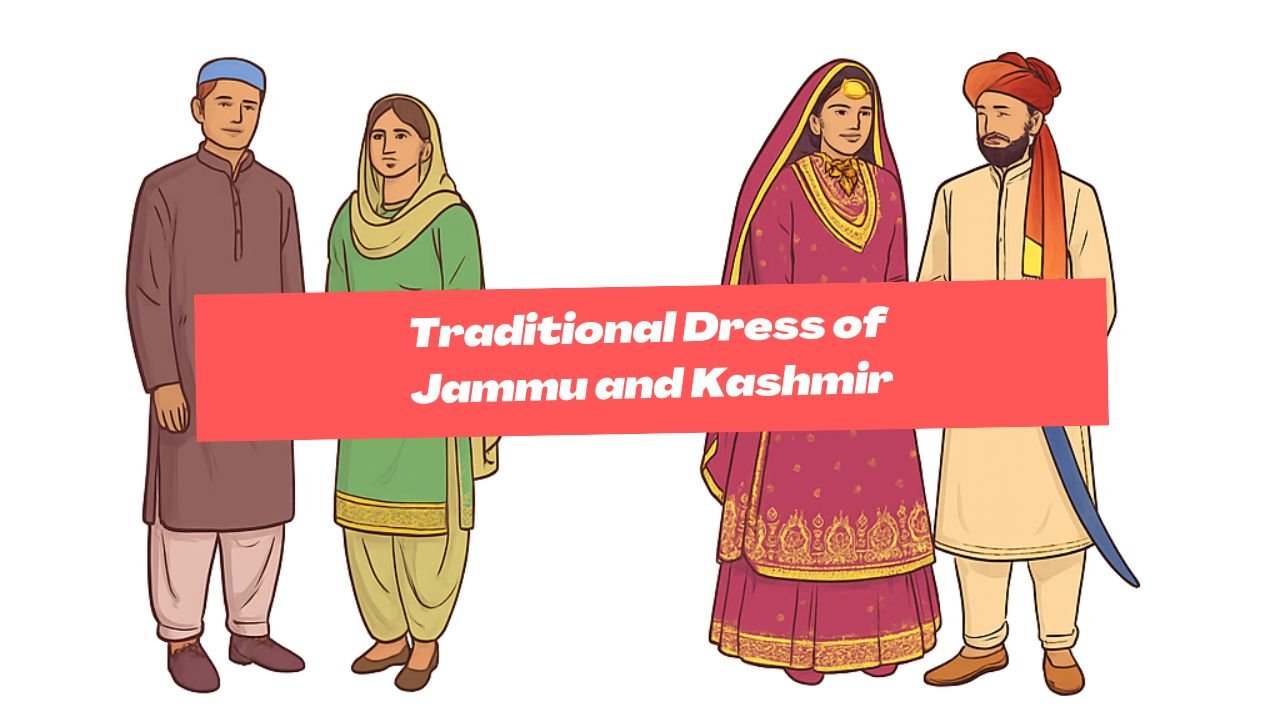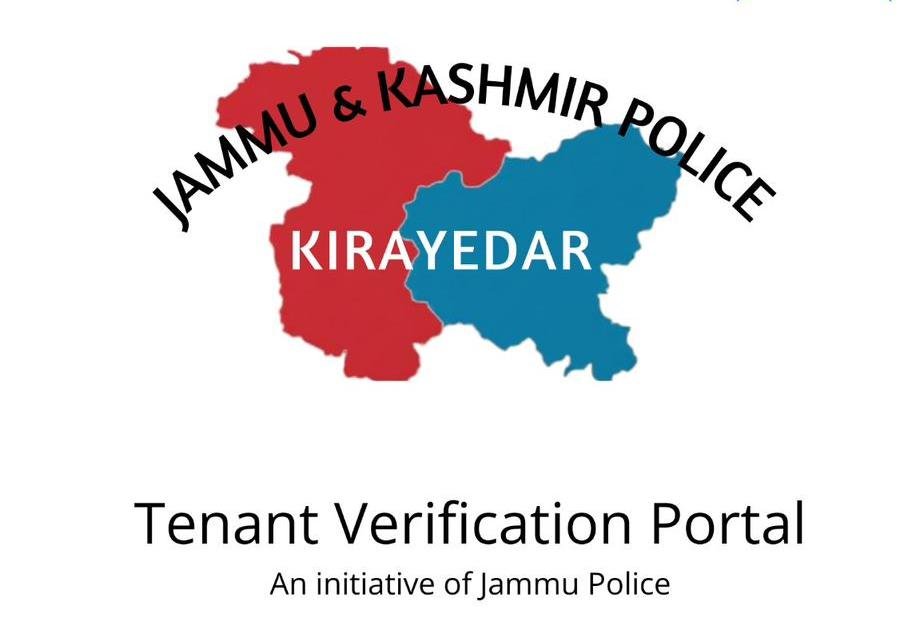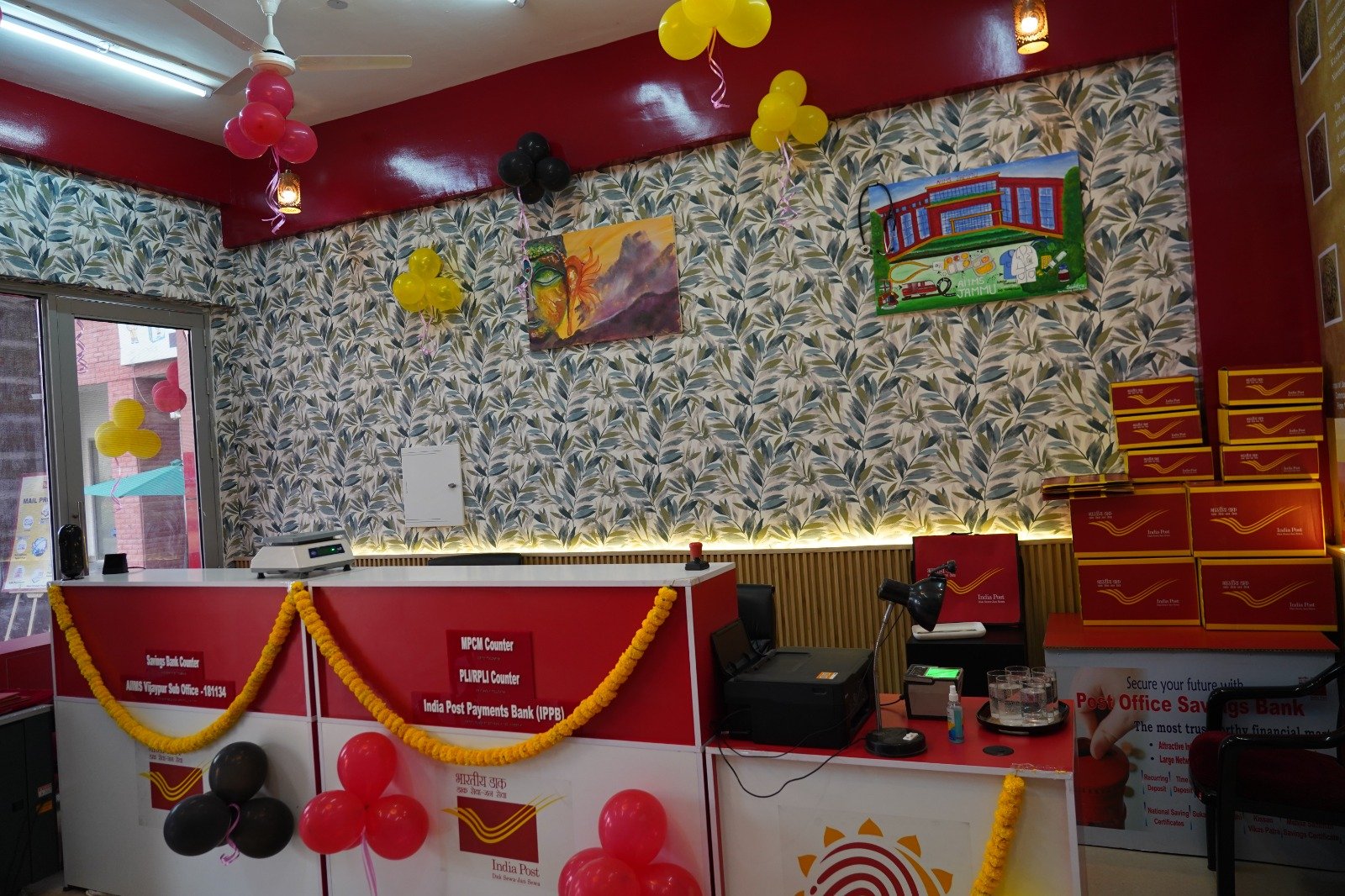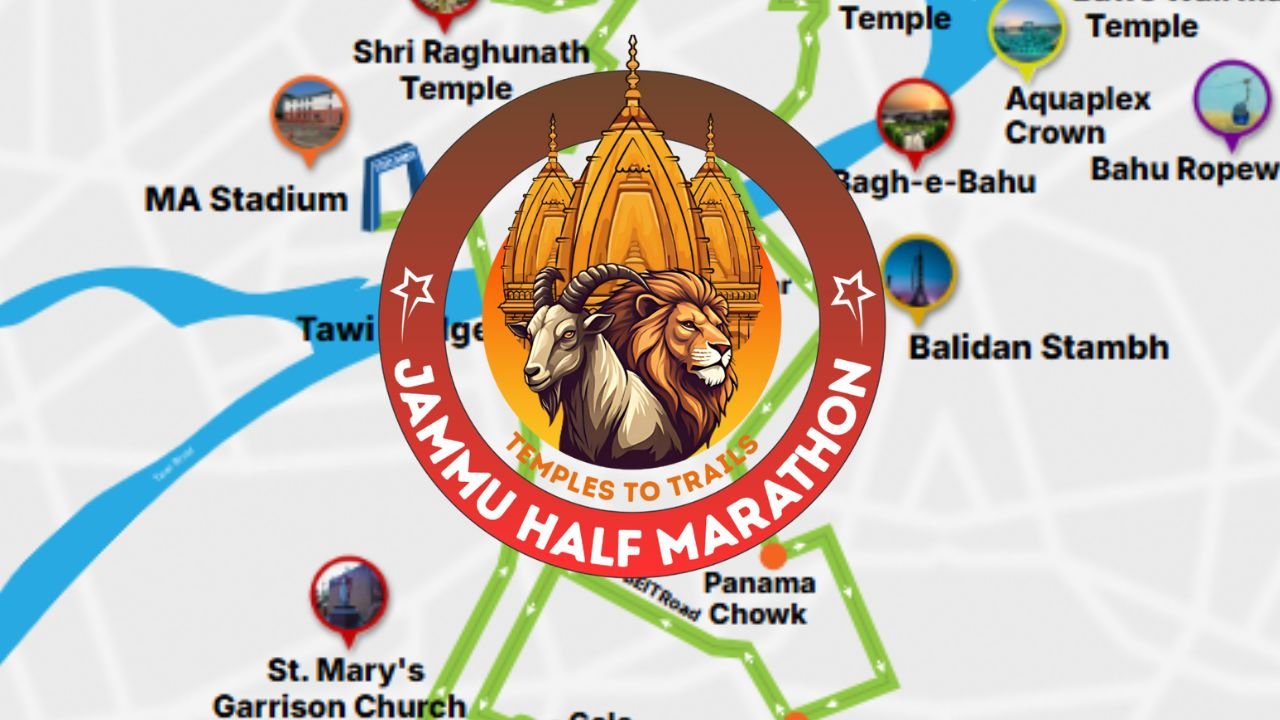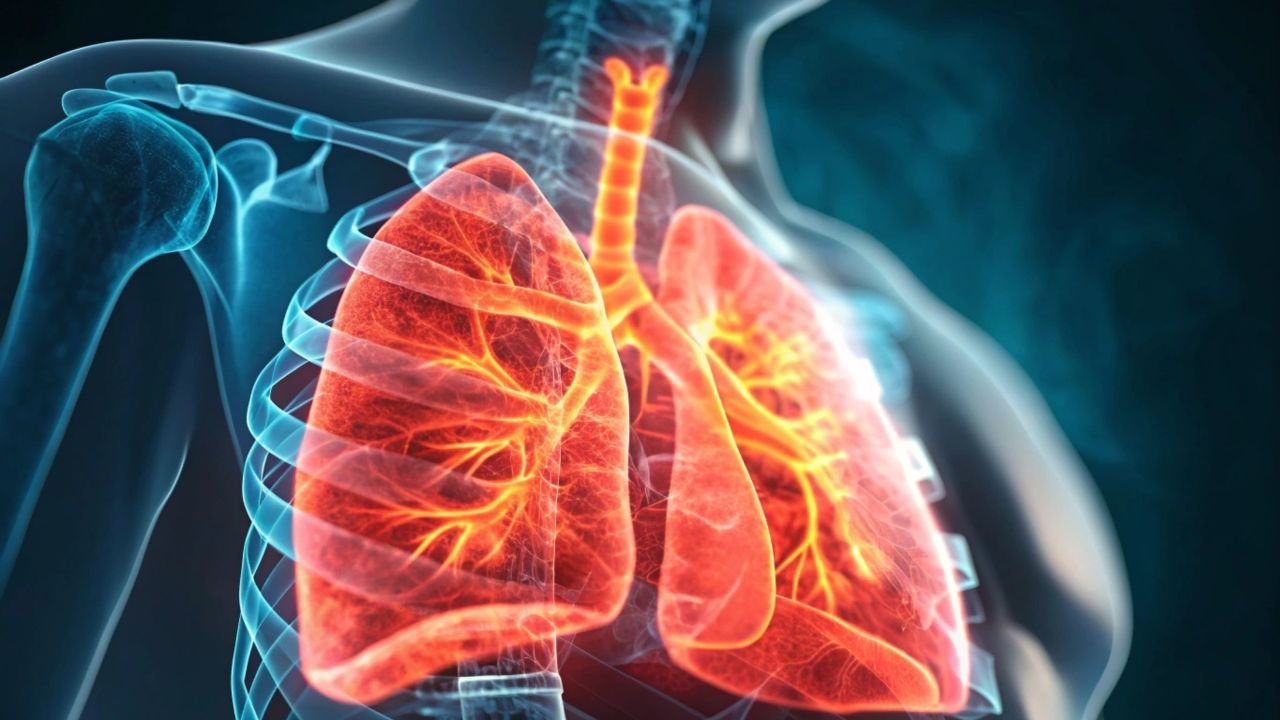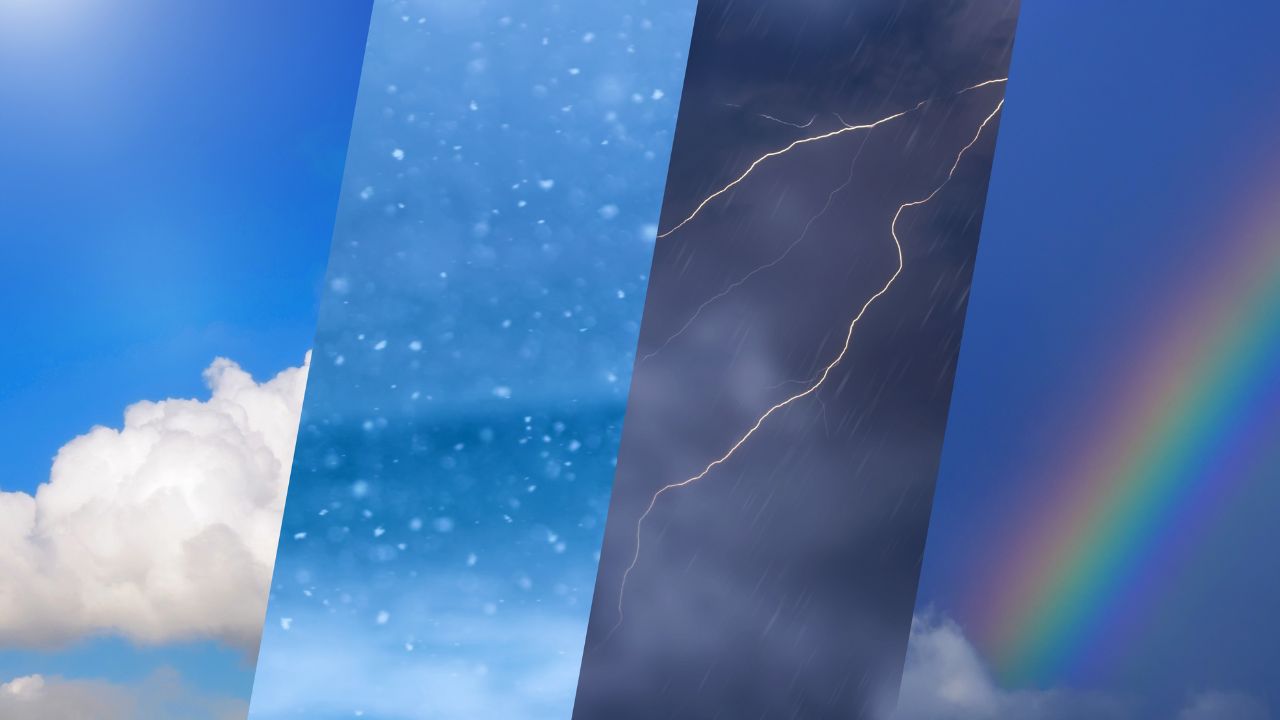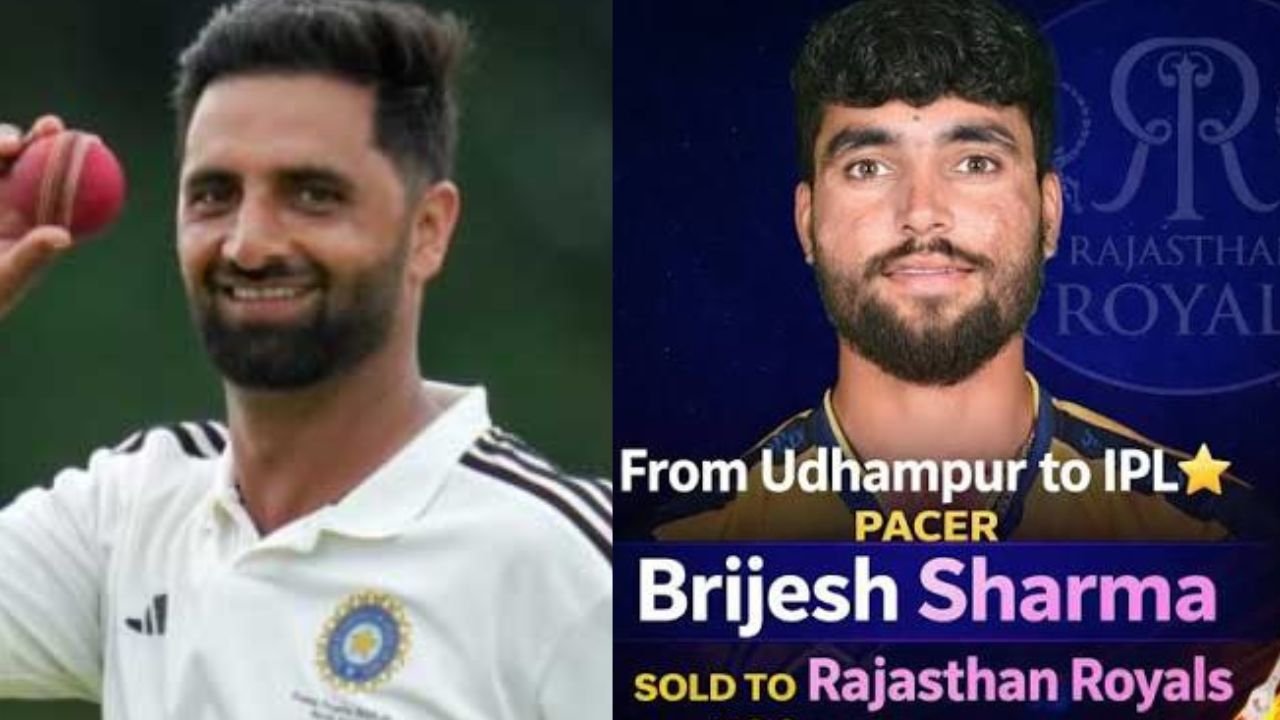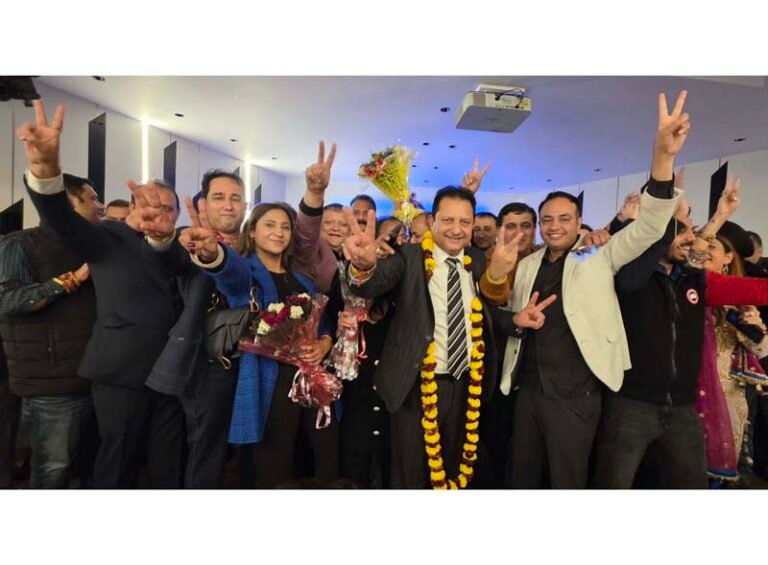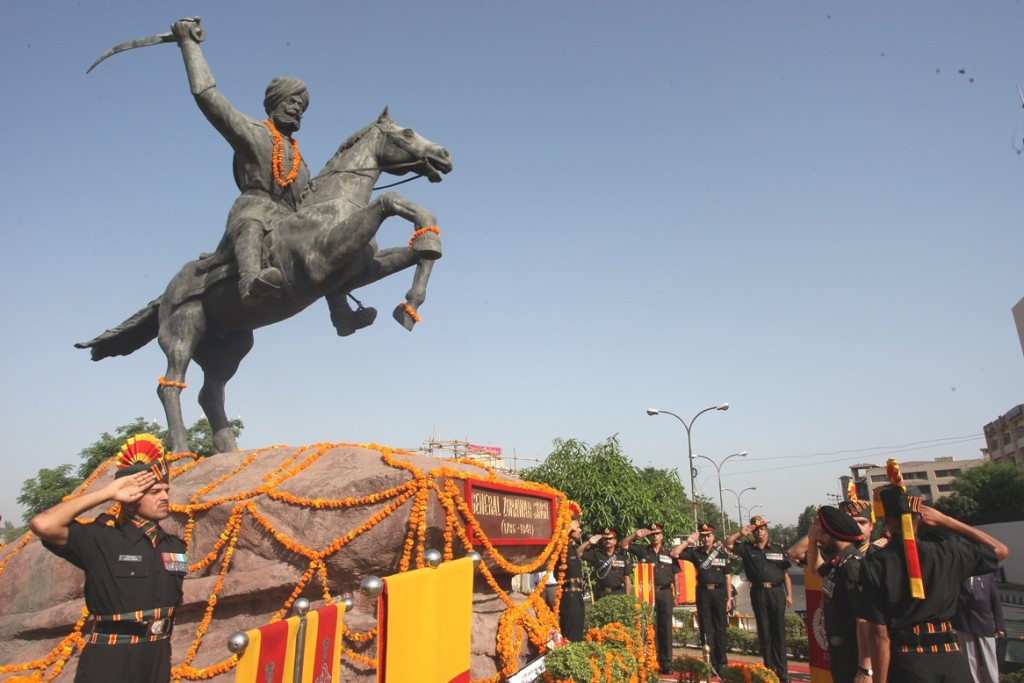Jammu and Kashmir is not just famous for its breathtaking landscapes but also for its rich cultural heritage. The region’s folk dances like Kud and Rouf, traditional music, Dogra and Kashmiri songs, literature, and festivals such as Navratra reflect its diversity. Among these, the traditional dress of Jammu and Kashmir holds a special place. The attire is practical, region-specific, and symbolic of cultural pride, worn by Dogras, Kashmiris, and Gujjars in their unique styles.
Traditional Dress of the Dogras
Dogra Cultural Identity
Dogras are known for their unique beliefs, folk traditions, and festivals. Their clothing, like their lifestyle, is practical, functional, and climate-friendly, balancing daily life with cultural elegance.
Dogra Men’s Attire
- Everyday Wear: Loose pyjamas tied with cords, churidar pyjamas with long kurtas, and traditional turbans (Safa) symbolizing pride.
- Social Gatherings: Men wore ghuttanas (loose at the top, tight at ankles), long kurtas, and turbans called safa. For meetings, they wore baskats (woolen coats) with starched turbans.
- Weddings: Grooms wore embroidered achkans, churidar pyjamas, leather juttis, and carried swords, giving them a regal appearance.
- Winter Wear: Woolen coats, handwoven baskats, and blankets for shepherds.
- Dogra Safa: It is a style of the Turban/Pagri of Dogras. Men primarily wear it & a feeling of great pride accompanies the wearer.
That is Dogra dress. That cloak is called Chola (from Sanskrit चोडक) and the trousers is called Suthan (from Sanskrit स्वस्थन).
— Dogra Akkhar 𑠖𑠵𑠌𑠤𑠬 𑠀𑠊𑠹𑠋𑠤 (@DAkkhar) June 17, 2022
It is sad people don't know about dresses of other parts of India and due to their insrcurity & regional cancer, they label everything Mughal Mughal pic.twitter.com/J1TEIND7xp
Dogra Women’s Attire
- Everyday Clothing: Women wore salwar kameez, with dupattas covering their heads for socio-religious reasons.
- Festive & Wedding Wear: Women wore suthans (tight pyjamas with kurtas), adorned with colorful dupattas featuring embroidery like maha jaal, jalebi jaal, bel wala jaal. Brides wore heavily embroidered suthans with gota kinari work in gold, silver, and multi-colors.
- Accessories: Pashmina shawls, handwoven woolens, and colorful odnis.
Read also: Dogra Traditional Dress for Men and Women
Traditional Dress of Kashmiris
Tourists dress in traditional Kashmiri attire as they enjoy in a Mughal Garden in Srinagar on Wednesday. pic.twitter.com/xJhaV41ERf
— Rising Kashmir (@RisingKashmir) January 10, 2024
Kashmiri Women’s Attire
- Pheran: The most iconic attire, often embroidered with zari and floral patterns.
- Hindu Women: Long pherans with narrow sleeves, tied with a lungi, and wedding headgear called Taranga, stitched to a cap and narrowing at the back. Jewelry included Dejharoos (gold pendants like mangalsutra).
- Muslim Women: Knee-length pherans with wide sleeves, zari work, and floral motifs. They wore Kasaba (red headgear tied with silver pins) and abaya. Silver jewelry like necklaces, bangles, and earrings were common.
An elderly Kashmiri Pandit woman in traditional dress which is worn in 3 parts. Tarangah on head, Pheran from shoulder to ankle and Looeng which is a waist belt.
— Shah Ahsan Illahi (احسان) (@ShahAhsanIllahi) February 26, 2025
Photograph clicked in 1985 by: Kapil Kaul
Source: Vintage Kashmir pic.twitter.com/2NjXYi6zyw
Kashmiri Men’s Attire
- Pheran: Long, loose woolen gown worn by both Hindu and Muslim men. Hindus wore plain versions, while Muslims had embroidered styles.
- Accessories:
- Hindus: Turbans (Pandit style, similar to Namdhari Sikhs).
- Muslims: Skullcaps, Karakuli fur caps, Pashmina shawls, and Pathani suits.
- Winter Essential: The Kangri, an earthen pot with hot coal, tucked inside the pheran for warmth.
Traditional Dress of Gujjars
The Gujjars, living in the hilly regions of Kashmir, have distinct attire:
- Women: Loose tunics with baggy salwars, often with face veils covering up to the shoulders. Hair was braided into multiple plaits and brought to the front.
- Men: Wore simple pherans, woolen clothing, and turbans suited for nomadic lifestyles.
Fabrics and Embroidery in Jammu & Kashmir Attire
- Fabrics: Wool, cotton, and the world-famous pashmina are central to local clothing.
- Embroidery Styles:
- Sozni – Fine needlework with floral patterns.
- Tilla – Golden thread embroidery on pherans and suthans.
- Ari & Kani – Popular in shawls and festive wear.
Cultural and Religious Significance
- Attire reflects festivals, marriages, and rituals.
- Dogri suthans and odnis are integral to weddings.
- Kashmiri Taranga is a must for Hindu brides.
- Colors, embroidery, and jewelry symbolize status, tradition, and spirituality.
Modern Influence on Traditional Dress
While modern clothing has replaced many traditional outfits, Dogra suthans, Kashmiri pherans, and Gujjar tunics still appear at festivals, weddings, and cultural events. Designers now blend these with modern fashion, keeping the heritage alive.
Where to Buy Traditional Dress in Jammu & Kashmir
- Jammu Markets: Raghunath Bazaar, Peer Mitha, and Dogra handicraft shops.
- Srinagar Markets: Lal Chowk, Polo View Market, and government emporiums for pherans, shawls, and jewelry.
- Handicraft Emporiums: Offer authentic Dogri and Kashmiri embroidery.
The traditional dress of Jammu and Kashmir is more than clothing—it is a reflection of the region’s diverse culture, heritage, and identity. From Dogra suthans and Kashmiri pherans to Gujjar tunics, every attire tells a story of climate, lifestyle, and tradition. Preserving these costumes not only keeps history alive but also connects the people of J&K to their roots.

